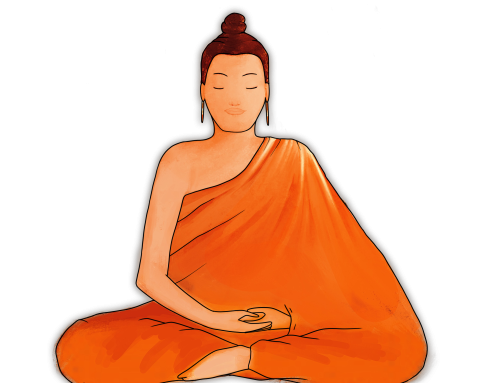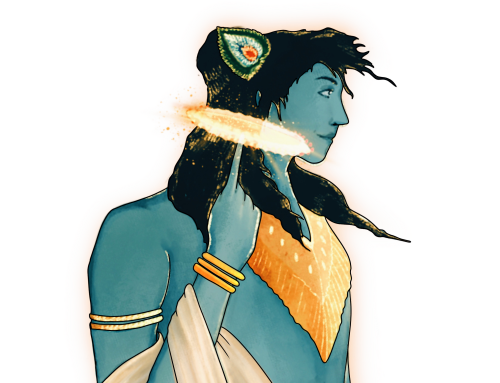There are many mythological stories of the creator God Brahma. I am telling you the one that is closely associated with me. There are multiple and complex meanings of the symbolisms in which every deity is represented. I have picked few of them in a hope to trigger your interest to find out more.
According to Indian Mythology, Brahma created the Universe and all the creatures in it. Before the creation of the Universe, there was nothing but cosmic ocean from which a golden egg (Hiranya Garbha as called in Sanskrit) emerged. Brahma created himself in the golden egg. It was floating in the water until fully grown. The egg broke open and Brahma, who had created himself within it, came into existence gaining the name Swayambhu (self-born). Then he created the Universe, the Earth or Bhuloka, the Heaven or Swarga loka. He created plants, animals and all other living beings. He created land, mountains, forests, rivers, seas and oceans. Symbolizing that all the creation started in the cosmic or primordial water, he carries Kamandalu (in Sanskrit) or water pot in his hand, as a giver of life.
He created the first man on Earth and called him ‘Manu‘ (in Sanskrit). So all of us, who are the children of Manu came to be known as Manava or Manushya, thus Brahma becoming our grandfather. He created Maanasaputras (mind born children), Saptarishis – the great seven sages for each cycle of Manu, Devas, Asuras, Rakshasas and so on.
Brahma created time or ‘Kaala‘ (in Sanskrit). He ensured that the duration of the material Universe is limited and the Universe follows the never ending cycle of creation, maintenance and destruction or the cycle of birth, existence and death. This is represented by the Japa Mala (in Sanskrit) or the chain of beads he carries in his hand. He asked his friend God Shiva to keep track of the Kaala and to take care of the cycle of destruction, and asked his friend God Vishnu to take care of maintenance, while he takes care of creation.
To create the Universe, one has to be an epitome of knowledge and wisdom. That is Brahma. He created 4 heads, 8 eyes and 8 ears for himself to think, to see and to hear in all 4 directions to create a perfect Universe. So he is called Chatur Mukha (in Sanskrit) or the one with 4 faces and also Ashta Karna (in Sanskrit) or the one with 8 Ears. The stories say that the 4 Vedas (in Sanskrit) or the books/ancient scriptures of great Knowledge and Insights came out of the 4 heads of Brahma.
Brahma is shown seated on a Padma (in Sanskrit) or Lotus and sometimes even holding the Lotus which is one of the most sacred symbols. With Brahma, it is a symbolism of knowledge, purity of thought, transformation and enlightenment. As lotuses rise from the mud into a beautiful flower, it doesn’t take into account it’s origins and still transforms into a beauty, and without stains to be a symbol of purity.
His vahana is Hamsa (in Sanskrit) which is a white Goose or a Swan, again a symbol of wisdom. This is the only animal that has the magical ability to separate milk from a mixture of water and milk. This symbolizes the wisdom to differentiate between the good and the bad.
Brahma is also represented carrying a Shruva (in Sanskrit) or a Ladle used for feeding the sacrificial fire. This can symbolize multiple things, like igniting the passion for learning to move from ignorance to knowledge, like the energy of the burning fire that can conquer all darkness.
My takeaway from Brahma symbolism is that, the idea to always aim higher than one’s goal was already presented to us in scriptures and even in pictures long long ago. To create something beautiful and unique, it is crystal clear that one has to focus on learning and on developing enormous knowledge by seeing, reading, listening, thinking, understanding and acting on it at a much higher rate than usual, lets say at a rate of 4X here as depicted by the number of heads, eyes, ears, mouth and hands. During the journey, one has to develop the ability to differentiate between good and evil and have the determination to rise and transform like a Lotus to attain the highest level of wisdom i.e., enlightenment.



